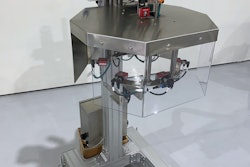PTIS, along with partner Leading Futurists LLC, is known for gathering and synthesizing data from all sectors to form 10-year forecasts for its Future of Packaging program. While many of the projections from its most-recent 2019 study will stay on course, some will probably accelerate as companies find workarounds. Savvy packaging professionals should concentrate on the factors listed here to ensure a successful 2021.
· Technical disruption: Emerging technologies will have significant relevance in packaging, says PTIS co-founder and Partner Mike Richmond. He anticipates much greater use of artificial intelligence (AI), the Internet of Packaging (IoP), augmented reality (AR), and virtual reality (VR) in 2021.
· Focus on productivity: PTIS Partner Todd Bukowski foresees sharper attention to operational efficiency. To achieve this, many brands will reverse the long-term trend of SKU proliferation. Instead, they will reduce the number of SKUs to decrease the need for equipment changeovers. Many companies will also try to locate production closer to local markets to reduce transportation costs.
· Growing use of automation: All the PTIS partners agree that brands will accelerate the automation of their packaging lines. There are many factors driving automation, including labor shortages, manufacturing speed, and worker and food safety. Expect to see increased usage of robotics to handle case packing and kitting.
See Video: L’Oreal’s Robotic Packaging Line Replaces Five Machines
· Real-time analytics:More packaging lines will take advantage of numerous sensors to collect meaningful data that can be displayed in dashboards. Partner Tim Brown says this will allow operators, maintenance crews, and engineers to identify and repair variations more quickly. Brian Wagner, PTIS co-founder and Partner, says companies may not be able to use all that data today but will rely on AI to analyze vast quantities of data to hone productivity.· Remote service: Key to productivity is keeping packaging lines up and running. With the pandemic and quarantine mandates, machine vendors may not be able to provide immediate technical service. Increasingly, service calls will be handled remotely, eliminating costly and time-consuming travel. Service reps will use technology such as smart glasses and AR to diagnose and help on-site personnel remove bottlenecks. These advances might allow multiple remote experts to visualize machinery and suggest repairs.
See: Conducting a Virtual FAT
· Changes in how we work: Last year saw more people working from home—a trend that’s unlikely to change in 2021. Many packaging operations employees are considered essential personnel and are required to work on-site. However, managers, designers, engineers, and others may work remotely. These employees will increasingly rely on communications technology to improve collaboration. Automation will also enable activities such as line trials and remote diagnostics.
· Ongoing sustainability emphasis: In spite of the economic slowdown, consumer demand will continue to drive efforts to make packaging more sustainable. What might be different in 2021 is an emphasis on reusable packaging. Making packaging more durable for multiple reuses will increase costs. However, it is still questionable whether consumers will accept scuffing and dings on their packaging.
· EPR coming to the U.S.: Climate change is a major concern for the country, and packaging waste is seen as a contributing factor. Wagner points out the new administration is committed to new environmental protections, and extended producer responsibility rules are likely. Brands and packaging suppliers are showing increasing acceptance of the concept to promote sustainability. At least five states are likely to impose some type of scheme to extend control of packaging waste costs to producers in the near future, and federal measures are being discussed to ensure consistency across the country.
See: Planning for Recovery Systems Change
· Packaging’s role in branding: Richmond says packaging will play a stronger role in branding. With an emphasis on building a circular economy, consumers expect packaging companies to “do the right thing” in material choices and package design. This will make packaging a key part of a brand’s message.
· Ultraconvenient packaging: Convenience has been a major driver in the development of new packaging. Look for designers to find new ways to make packaging more convenient and to create a stronger experience for consumers by enhancing their sensory experience. Any developments that enhance ease of use, product freshness, and easy disposal will add appeal in this competitive market. Packaging also must be designed for ease of use across more retail channels—especially in the rapidly expanding e-commerce market.



























